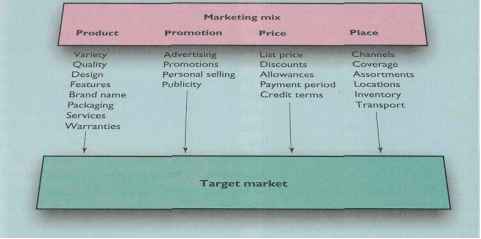Focus on strategic objectives
Balanced Scorecard Fundamentals Online Course
For the success of any business, you must identify a properly balanced scorecard that can help you gauge the performance of different fields within your business. Learning to create business scorecards is not simple, as you require high experience to create a balanced one. Balanced scorecard fundamentals is a program designed to help you improve your business by sharing a working solution that can work. This program is designed in a very user-interactive layout, which also uses simple language to ensure you are properly educated on balanced scorecard creation. With balanced scorecard fundamentals, you can learn about the definition and origin of scorecards for businesses. This helps you understand the various uses of balanced scorecards. This program is also very important in helping you understand the benefits of using this business management system to help you use it effectively. This program can help you understand the various components of a successful business scorecard which is very important when creating one for your business. You can also learn about four strategic perspectives to help you better plan your business. Read more here...
Balanced Scorecard Fundamentals Online Course Summary
Contents: Skillshare Online Course
Creator: Katalin Köbli, KPI and Balanced Scorecard Expert
Official Website: skillshare.com
My Balanced Scorecard Fundamentals Online Course Review

Furthermore, if anyone else has purchased this product or similar products, please let me know about your experience with it.
I give this product my highest rating, 10/10 and personally recommend it.
The balanced scorecard
The balanced scorecard, popularised in a Harvard Business Review article by Kaplan and Norton (1993) can be used to translate vision and strategy into objectives and, then, through measurement assessing whether the strategy and its implementation are successful. In part, it was a response to over-reliance on financial metrics such as turnover and profitability and a tendency for these measures to be retrospective rather than looking at future potential as indicated by innovation, customer satisfaction and employee development. In addition to financial data the balanced scorecard uses operational measures such as customer satisfaction, efficiency of internal processes and also the organisation's innovation and improvement activities including staff development. It has since been applied to IT (Der Zee and De Jong, 1999), e-commerce (Hasan and Tibbits, 2000) and multi-channel marketing (Bazett et al., 2005). Balanced scorecard Table 4.
The Marketing Process
The strategic plan defines the company's overall mission and objectives. Within each business unit, marketing plays i role in helping to accomplish the overall strategic objectives. Marketing's role and activities in the organization are shown in Figure 3.6, which summarizes die marketing process and the forces influencing marketing strategy.
Stage 2 Defining the performance metrics framework
(b) Include micro-level metrics which assess the efficiency of e-marketing tactics and implementation. Wisner and Fawcett (1991) note that typically organisations use a hierarchy of measures and they should check that the lower-level measures support the macro-level strategic objectives. Such measures are often referred to as 'performance drivers', since achieving targets for these measures will assist in achieving strategic objectives. E-marketing performance drivers help optimise e-marketing by attracting more site visitors and increasing conversion to desired marketing outcomes. These achieve the marketing efficiency control specified by Kotler (1997). The research by Agrawal et al. (2001), who assessed companies on metrics defined in three categories of attraction, conversion and retention as part of an e-performance scorecard, uses a combination of macro- and micro-level metrics. There are a framework of measures, shown in Figure 9.
Market Challenger Strategies
A market challenger must first define which competitors to challenge and its strategic objective. The challenger can attack the market leader, a high-risk but potentially high-gain strategy. Its goal might be to take over market leadership. Or the challenger's objective may simply be to wrest more market share. How can the market challenger best attack the chosen competitor and achieve its strategic objectives It may launch a full frontal attack, matching the competitor's product, advertising, price, and distribution efforts. It attacks the competitor's strengths rather than its weaknesses. The outcome depends on who has the greater strength and endurance.
Roi Of Social Media Marketing
For example, in making the case for a Balanced Scorecard approach to Social Media Marketing ROI, Mr. Ray posits that many brands fail to measure true business value. A mass of followers that like' the brand but never return to the fan page is far less valuable than a handful of followers who frequently share brand updates with friends. The Balanced Scorecard approach that Forrester ultimately proffers to marketers is well worth consideration But I wonder how many corporate marketers have the tools and systems, partnerships and perspective required to do it justice
Digital Marketing KPIs For Dummies
But in all of this, there's also a saddening story to tell. Even though thousands of startups evolve every day, there are about 3 4ths of them getting shut too. There are innumerable reasons to it. But if we have to analyze it from a digital marketing point of view, it is critically important for all the startup founders to understand the Key Performance Indicators (KPIs). Founders cannot survive the growth without understanding the KPIs in depth.
How To Determine KPIs For Mobile Apps? - An Insight
In the beginning, it's fascinating to see a huge number of app downloads for your app which is good but shouldn't be taken for granted and be relied upon as a success metric for your app. The number of downloads for your app doesn't guarantee the fact that users will cling on to your app and would use it. Even if the number of downloads is high, a glitch in the app or poor feedback or anything else can lead to immediate uninstalls of your app. Under such circumstances, it becomes difficult for the app owners to rectify the glitch or hindrance and thus, to solve this issue, it's crucial that businesses have a fair idea about the Key Performance Indicators (KPIs) for the mobile app.
Data Analytics Startup Realbox Wants to Become Google Analytics for Offline Businesses
Its product Pulse is like Google Analytics for offline businesses. It analyses and presents business summary right on user's' mobile phone. It can be used by multiple partners in real time, so user know exactly what's going on in their store or restaurant. If you have multiple stores, you can have the luxury of seeing your business overview and store by store performance measured against your chosen KPI's (Key Performance Indicators), the startup says.
Five Things Marketers Must Do To Prove Digital Marketing ROI
The number of followers on Facebook and Twitter profiles likes, shares, and retweets sessions and email open rates while the top management understands the importance of these metrics, it more often than not struggles when it comes to assigning them a tangible monetary value. This is where the whole thing essentially boils down to how much value digital marketing initiatives can add to the bottom-line of the business. Hence, if you have to report a return on financial investment, your support metrics must be linked to the revenue. For instance, you can show how increasing engagement at a particular phase of customer journey can lead to a consequent increase in the conversion rate. If any specific metric is unavailable, use other Key Performance Indicators (KPIs) that affect the metric that you're moving. Mapping individual support metrics over a period of time has multiple advantages.
How to Crack Instagram Influencer Marketing in Ecommerce
You should also define your key performance indicators (KPIs) based on your goals. If your goal is to increase brand awareness, you should keep track of views, engagement rates and social media followers. But if you want to boost sales, you should look at conversion rates and click-through rates.
You are Crazy not to Measure the ROI of Social Media!
The key is that each point of the Awareness Consideration Preference Purchase (ACPP) spectrum we have to agree that there are Key Performance Indicators (KPI's) that lead to ROI. (News coverage is an agreed upon KPI for Awareness because people have to know about your product or service before purchasing it.) You need to establish KPI's for your social media program that map to as many of these as possible.
Kit Kat Have a break
Strategic Objectives Net operating profits, return on capital employed (ROCE) and market shares drive the company. Eaeh product group has objectives. The company has a cascade system so that each brand has its objectives as well. Each has a brand plan - business plans for each brand. One of the strategic objectives of Nestle is to increase sales across the European markets. Often the marketing managers are not always able to put in capital to supply across Europe, To do this Nestle have had to adopt a penetration strategy, which means that the margins are lower and this has a depressing effect on the group's ROCE.









